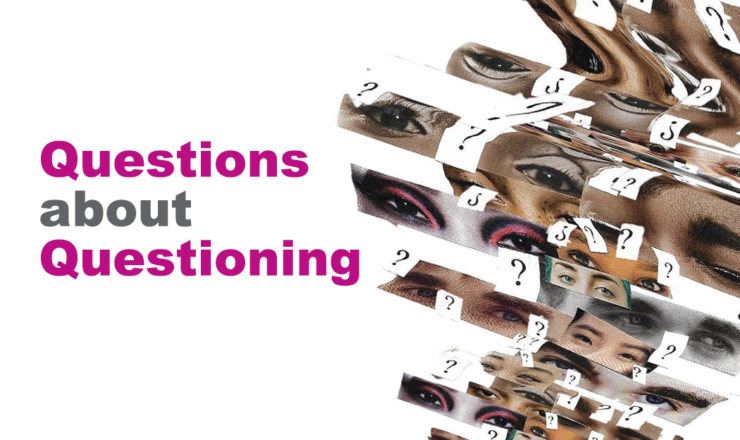

So you’ve decided you want to get birth control! Whatever your reason is – if it’s because you’re having sex, if it’s to help with periods, reduce acne, or many other reasons – you’re doing an awesome thing to for you!
For the first post in our What To Expect series, we’re going over some of the basics of what it’s like to go to an appointment for birth control.
Since you only need a prescription for hormonal birth control, we’ll mainly just be talking about the Pill, the Patch, the Ring, Hormonal IUDs, and the Injection. Copper IUDs and Fitted Diaphragms require a doctors appointment for insertion or fitting. There are lots of non-hormonal birth control methods (condoms, vaginal contraceptive film/VCF, the Caya diaphragm, fertility awareness methods/FAM, the sponge) that don’t need a prescription, but we’ve got lots of info on all of them in our Birth Control section: teenhealthsource.com/topics/birthcontrol
So,getting started with a birth control prescription can feel really overwhelming. There’s so many kinds, costs, side effects, and a ton of other things to consider, on top of any concerns about what happens in a clinic! (Side note – Check out our Birth Control Methods assessment to helpe find out which method could be a fit for you: Link)
Every clinic and health care professional is different, and so are you, but there are some basics. For a great primer on what you can expect at a clinic/pharmacy and have a right to, check out our page on Youth and Health Care Rights [Link]
Here’s some things to expect when you make an appointment for birth control at Planned Parenthood Toronto/PPT (our parent organization):
At PPT, you come into the clinic and tell the reception staff you have an appointment, or that you’d like to make an appointment. PPT doesn’t need you to be covered by OHIP to use any of their services, but if you do have your health card or some kind of ID, they will ask to see it.
If you’re going to another clinic, you’ll probably need your OHIP health card and/or maybe other insurance info. You can call ahead to check if you’re unsure. For a list of youth-friendly clinics in Toronto, check out our GTA services tab: teenhealthsource.com/service-tag/birth-control
Most clinics ask you to fill out some forms. At PPT, most of the sections are optional, but you do need to fill out some parts.
| ****COOL TIP**** |
| At PPT you have the option of talking to a volunteer peer educator about sexual health stuff before you see a clinician. If you’re unsure about what birth control options to take, how different methods work, or any other questions, it may be a helpful option! |
Then your health care provider (nurse practitioner, doctor, family doctor, etc) will call your name, and take you somewhere private to talk about your health history. Health history usually includes asking things like if you have any allergies, or any chronic conditions like endometriosis, depression, or lifestyle things like if you’re a cigarette smoker, that may be relevant to hormonal birth control especially. They’ll also ask if you’ve been on any birth control before, make sure you’ve started your period if you’re getting hormonal birth control, if you’re having sex or thinking about it, and if you’re noticing anything going on with your body. If you are having sex, clinicians may ask how many partners you’ve had, if you’re using any other birth control options like condoms or pulling out. At PPT and many sexual health clinics, they should be non-judgmental. It’s helpful to be honest about your life with your healthcare provider so they can get an accurate picture of your health and needs, and work with you to figure out the best fit.
Depending on certain circumstances, you do NOT have to have a pelvic exam or a pap smear to get a prescription for birth control if you do not want to. There are some times when a doctor will recommend it if you:
| ****ANOTHER COOL TIP**** |
| You know your body best. If you don’t feel comfortable doing an exam or doing any testing, you aren’t obligated to. If you do notice any pain, bleeding, abnormal discharge, or changes going on down there, it may be worthwhile, but you can always say no and have a conversation with your healthcare provider on how to make you feel most comfortable. |
Many clinics (depending on if you’re having sex that could cause pregnancy or put you at risk for STI’s without using things like condoms) recommend doing urine testing for pregnancy or STI’s. If that’s not relevant to your life though, you don’t have to do it.
Depending on what method you want there’s a few different ways the appointment can wrap up. This next section breaks down the info you might get about how long a prescription is for, how long side-effects could last, as well as where to get it/cost.
| A Note About Cost |
| Check out ppt.on.ca/sexual-health for Planned Parenthood Toronto’s most recent price sheet. These prices are At Cost, which means they cost what the clinic pays to get them from the distributor. Prices at a pharmacy or even another sexual health clinic will be higher, sometimes twice as much or more. Feel free to ask about pricing at clinics before you make an appointment.
PPT does also offer birth control at Pay What You Can pricing, an occasionally have compassionate stock they can provide for free. Check with the your clinician during your appointment to see what options are available for you. If you are looking to have your birth control covered under your parents’ insurance plans, check with the clinic ahead of time to see what their process is. Some clinics can process claims for you, and some insurance plans require you to submit receipts after you’ve gotten the birth control. There’s no way to do this without your parents finding out. If you’re comfortable going this route, talk with your parents about what their plans cover and how to go about it. |
Prescription Info: Many clinicians start people off for 1-3 months to see how you like it! If a brand works for you, you can talk to your clinician about prescription length.
Trial & Error Timeline: Generally, it takes about 3 months for side effects to stop for these methods, but if they’re ever too much to handle or just uncomfy, you can always stop taking it and talk to your doc to find something else.
Where to get it: The pill, patch, and ring you can get at reduced cost at PPT. You can also get it with a gynecologist or obstetrician, family doctor and get your prescription from a pharmacy.
Prescription Info: Sometimes you can get the IUD inserted by a clinician the same day as the prescription appointment, or you may have to reschedule another appointment. You can ask ahead of time when you make the original prescription appointment if that’s an option.
Trial & Error Timeline: Your clinician will also give you a prescription for an IUD. In the first 6 weeks after insertion, there is the potential risks of IUD’s expelling. Otherwise, it can take a few months for your body to get used to your IUD. However, if it isn’t working, you can get it removed by your clinician and try something else!
Where to get it: You can get an IUD inserted at PPT, many sexual health clinics, with a gynecologist or obstetrician, family doctor, etc.
Prescription Info: If you decide on the injection, you may get your first shot on the same day, or have to reschedule.
Trial & Error Timeline: The injection lasts 12 weeks/3 months. What you experience in that first 3 month period is generally a good indication of how you react to it. However, if you’re having back side effects, you just have to live with it until it’s out of your body.
Where to get it: You can get the injection at PPT, many sexual health clinics, with a gynecologist or obstetrician, or a family doctor.
Prescription Info: You need a prescription from a healthcare professional for a diaphragm that needs to be fitted. You can buy one size fits all online without a prescription like Caya [Link] as well as spermicidal and barrier gel, which you can only get online in Canada.
Trial & Error Timeline: Using the diaphragm with spermicidal and barrier gel can take practice to figure out, so everyone’s different! If you are noticing any discomfort with the diaphragm, talk to your clinician. If you are reacting to the spermicidal or barrier gel, stop using it and consider exploring different birth control methods.
Where to get it: In Toronto, the Bay Centre for Birth Control (416-351-3700) does prescriptions and fittings. They’re $75. Caya is around $100 online.
| A Note About Filling Prescriptions |
| You can get your prescription for hormonal birth control filled at pretty much any pharmacy. Call ahead to make sure they stock whichever method you’re looking to get.
You can also sometimes get a procedure done at a different clinic that the one that wrote the prescription. Call ahead to check with the clinic if that’s okay, but (for example) you can generally get a prescription for a hormonal IUD from one clinician, go buy it from a pharmacy, and then get it inserted someplace else. We should note that Planned Parenthood Toronto is not a pharmacy, so they cannot fill outside prescriptions. You would need to become a PPT client to get your hormonal birth control from them (but no stress, it’s super easy!). |
Teen Health Source has a number of info pages on Birth Control methods:
Are you LGBTQ+ and wanting to access birth control? Queering Sex Ed has a great guide for getting ready for your appointment [Link].
If you’re outside of Toronto, you can contact Action Canada for Sexual Health Rights and they’ll help you find a clinic near you within Canada: sexualhealthandrights.ca, 1-888-642-2725
If you’re in the U.S., you can contact plannedparenthood.org.
If you have questions about this topic, feel free to contact one of our peer educators. [Link]
Last Updated: April 2020

Sexpert Kayleigh Trace (thefuckingfacts.com) talks to us about communication, disabilities, and what to do about sex toys if you’re under 18!

When or if you lose your virginity is supposed to be a totally personal choice, but that doesn’t mean it’s always an easy one! This post will go over some ideas and strategies to help you stay true to your decision to stay a virgin.

It’s common to feel a bit lost or unsure if you’re questioning your gender identity or sexual orientation. Here’s a couple of ideas that might help make Questioning more comfortable!